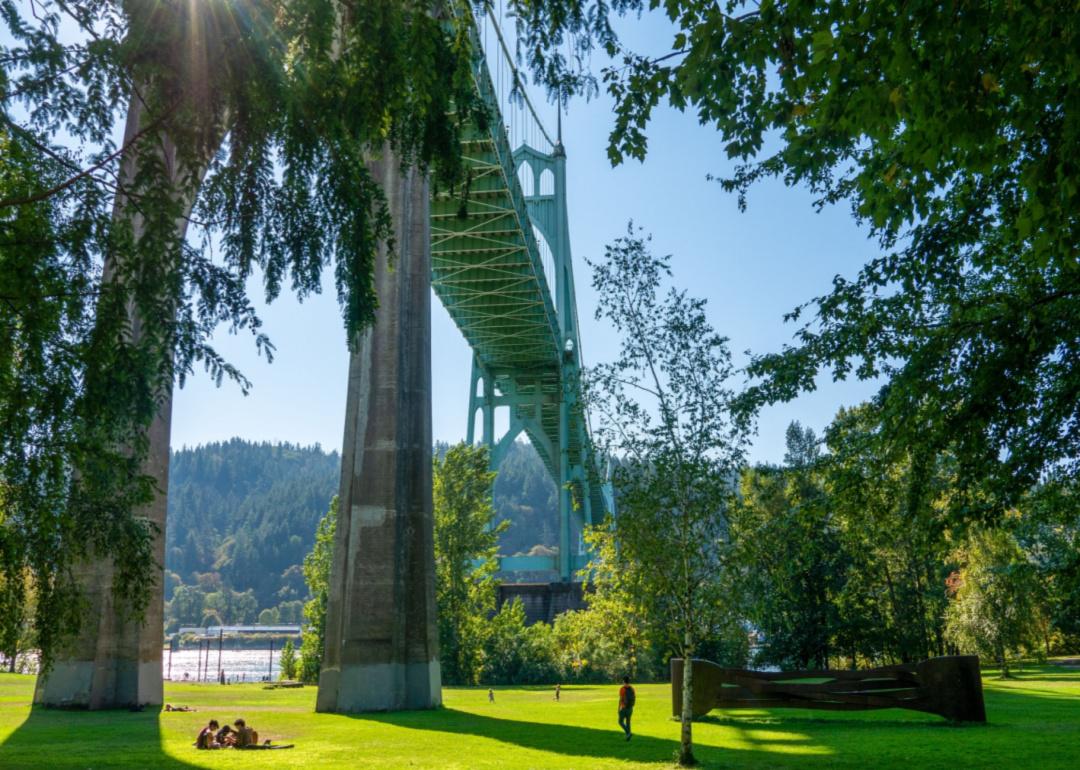
11 cities that have the most public outdoor space
This story originally appeared on Portland Real Estate and was produced and distributed in partnership with Stacker Studio.
11 cities that have the most public outdoor space
When one thinks of "green space," America's towering cities are hardly the first image that springs to mind. However, some of these concrete jungles are making the switch to prioritizing better access to outdoor areas within city limits.
Portland Real Estate examined the Trust for Public Land's 2022 Parkscore Index to see which cities have the most public outdoor space for residents. Rankings of the 100 largest cities by population consider multiple factors, including acreage, investment, amenities, access, and equity.
For this analysis, the definition of parks is land residents can access. That includes parks, trails, open spaces, school parks with a joint-use agreement, and private parks accessible to the public. It does not include parks in gated communities, golf courses, or playgrounds that do not have a joint-use agreement with the city.
About 100 million Americans do not live within walking distance of a park, per the Trust for Public Land. Those living more than 1 km (five-eighths of a mile) away are around 50% more likely to experience stress or anxiety than those closer. Parkland can also counteract some of the effects of climate change. A May 2022 survey of park agencies found that of the 100 largest cities, 85% say they are in the process of adapting facilities to address extreme heat and flooding.
Read on to learn how American cities incorporate outdoor areas for residents.
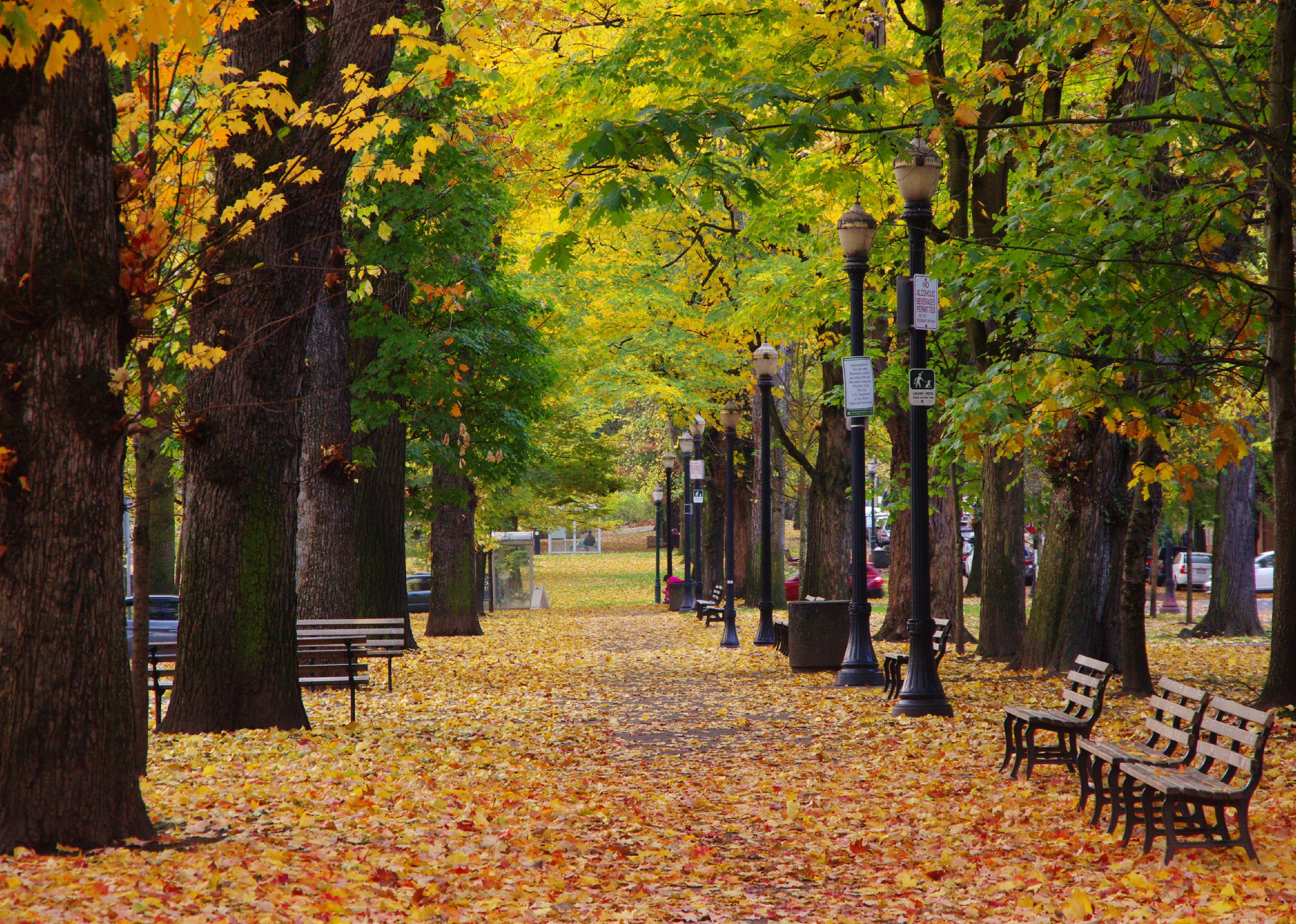
#11. Portland, Oregon
- Total score (out of 100): 74.5
- Median park size: 4.9 acres
- Percent of city that is parkland: 18.0%
- Percent of residents within a 10-minute walk to a park: 90%
Portland encompasses 325 parks, to which the city government contributes around $229 per capita. Recently established spaces include the Butte Falls Community Forest and Chiloquin Elementary Schoolyard. Spence Mountain has long been a popular area for running and mountain biking due to its surplus of trails. It is a favorite haunt of the Jackalopes, a local teen mountain biking club.
Many Portland-area groups focus on making outdoor recreation as inclusive as possible, with various organizations dedicated to bringing together residents of all backgrounds who share a variety of recreational, cultural, and social interests.
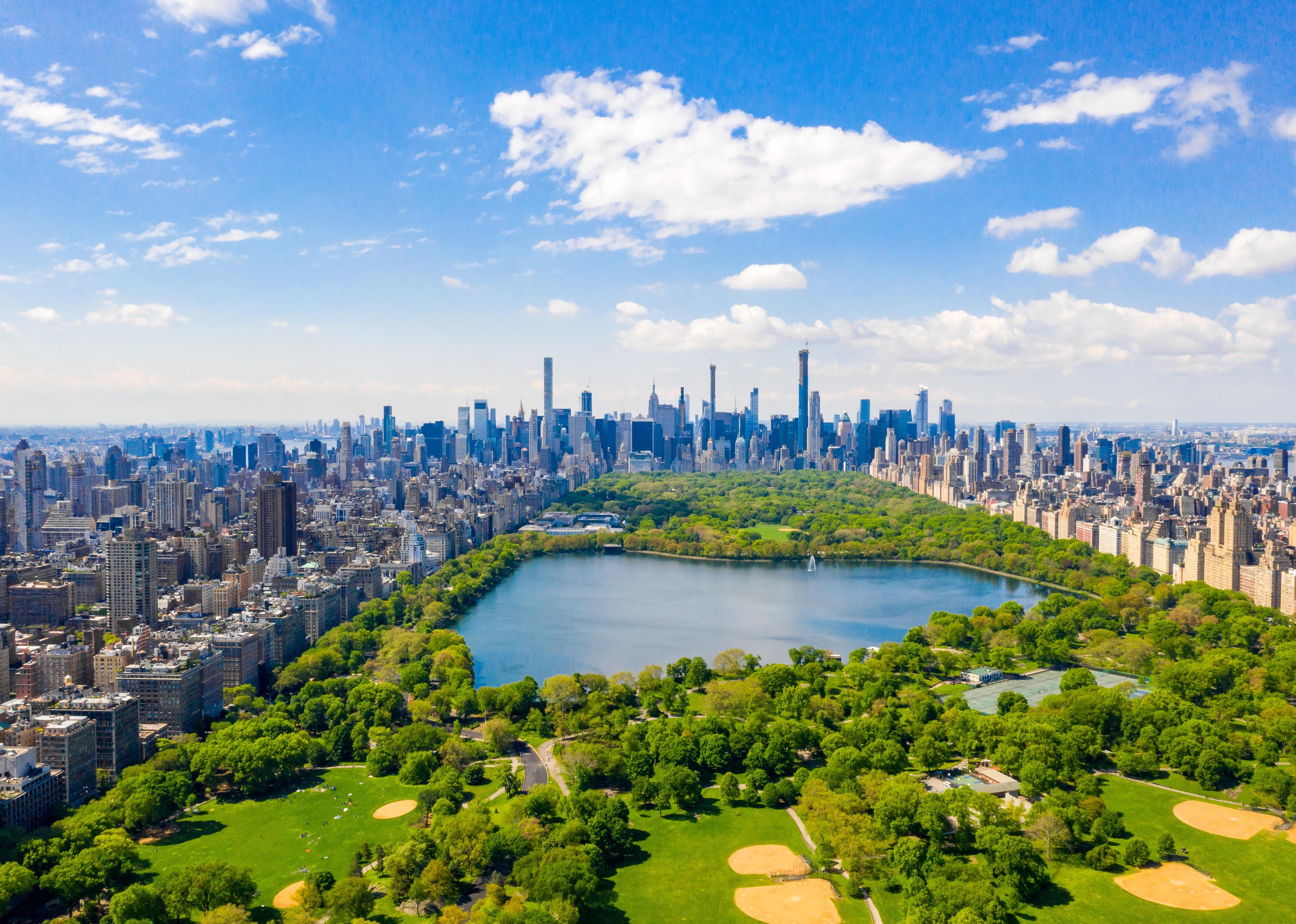
#10. New York, New York
- Total score (out of 100): 75.5
- Median park size: 1 acre
- Percent of city that is parkland: 21.2%
- Percent of residents within a 10-minute walk to a park: 99%
Despite being one of the most densely packed cities in the country, New York City also ranks highly in terms of public outdoor spaces. It comes in 10th of all cities in the Parkscore Index, beating out Portland, Oregon, and Boston, Massachusetts.
An impressive 99% of citizens live within a 10-minute walk of a park, with this distribution evenly spread across age, race, and income. Though Central Park may be the most famous, the city is home to 2.329 parks. Locals may have to search a little harder to get their outdoors fix in such a concrete-heavy space, but this has led to some creative solutions: For example, a climbing boulder was installed on Governors Island in July 2022.
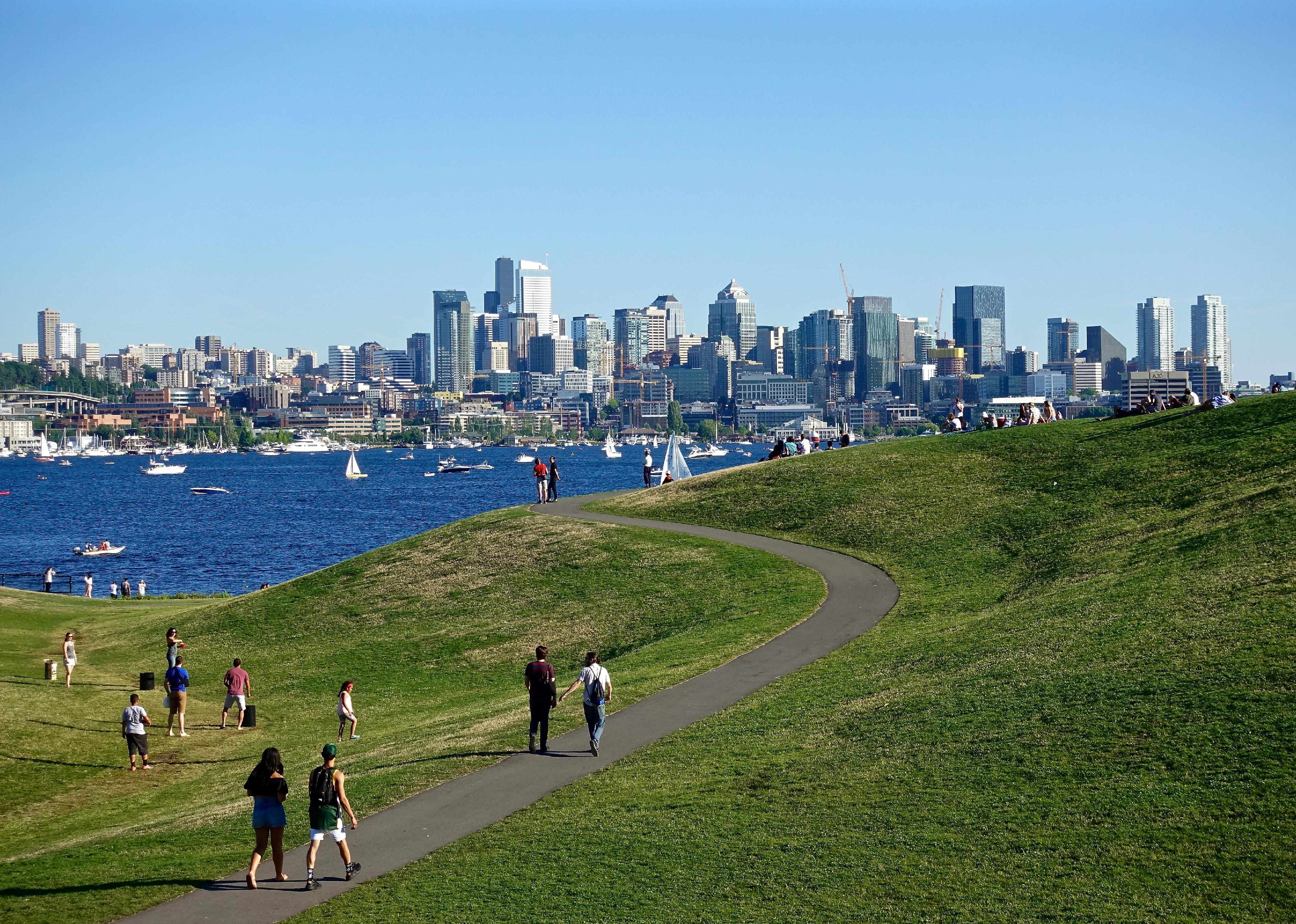
#9. Seattle, Washington
- Total score (out of 100): 76.2
- Median park size: 5.4 acres
- Percent of city that is parkland: 12.5%
- Percent of residents within a 10-minute walk to a park: 99%
With 885 parks within its borders, it's easy to see why Seattle is nicknamed the "Emerald City." Besides the standard hiking and running opportunities, residents also have the luxury of paddleboarding and whale watching at their front doors, thanks to nearby Lake Union, Portage Bay, and the San Juan Islands. The city is even home to a sandy Pacific entryway, Alki Beach. However, the same coastal position that makes these activities possible may also come at a cost as the effects of climate change, especially sea level rise, will affect residents in this coastal city.
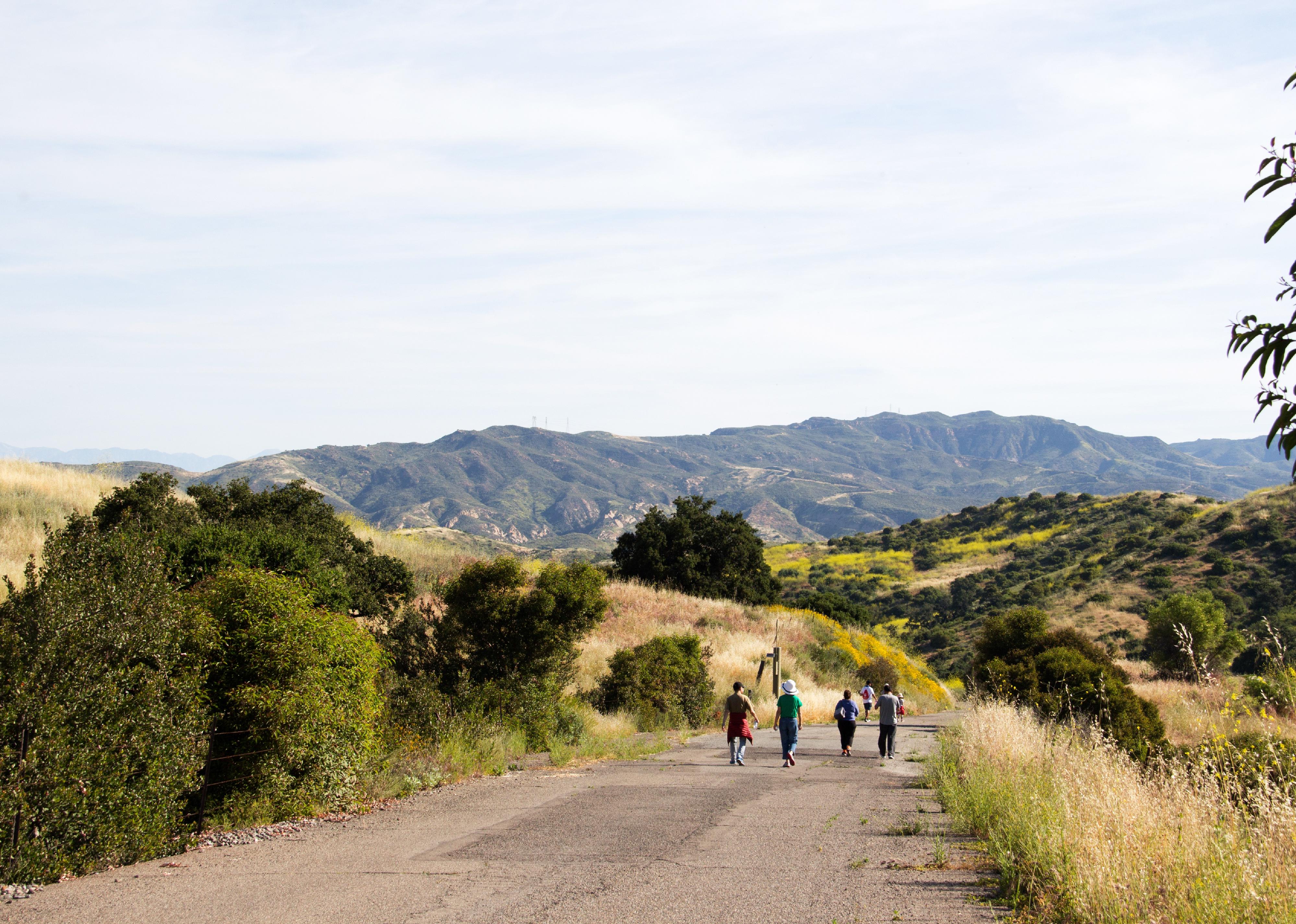
#8. Irvine, California
- Total score (out of 100): 76.6
- Median park size: 6.1 acres
- Percent of city that is parkland: 37.4%
- Percent of residents within a 10-minute walk to a park: 89%
Irvine hosts 306 parks, of which those under 20 and over 65 have the most access. The city is mainly known for Orange County Great Park. Thousands of acres of outdoor space in Irvine comprise the Irvine Open Space Preserve, home to wetlands, meadows, woodlands, and a variety of wildlife like deer, mountain lions, bobcats, and coyotes.
The city owes its preserved spaces to the Irvine Ranch Conservancy, which collaborates with city officials and local landowners to maintain and protect areas of significance.
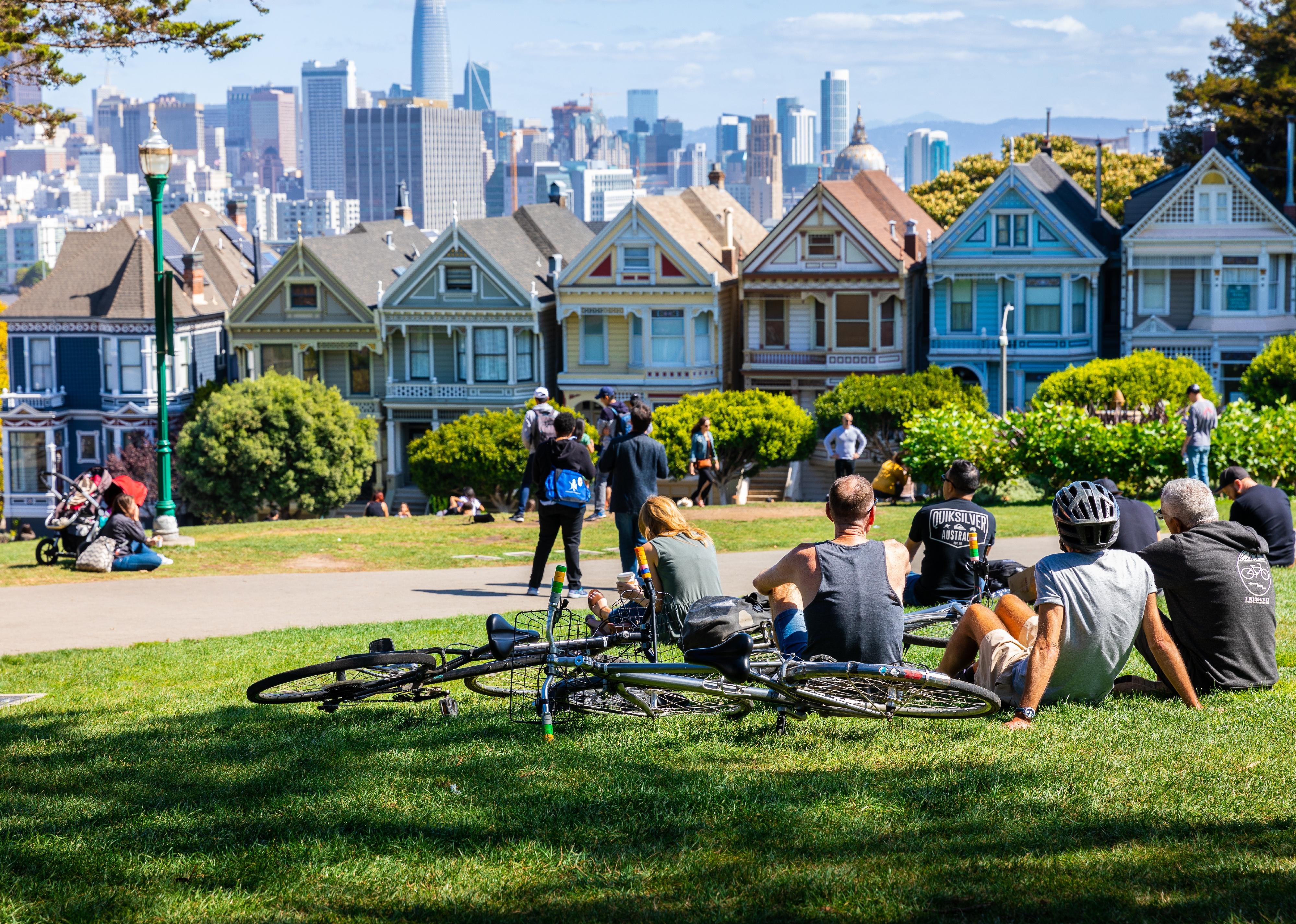
#7. San Francisco, California
- Total score (out of 100): 76.7
- Median park size: 1.3 acres
- Percent of city that is parkland: 20.6%
- Percent of residents within a 10-minute walk to a park: 100%
San Francisco is home to 481 parks, one of which surrounds its most iconic landmark, the Golden Gate Bridge. Golden Gate Park is just one example of the development of urban trails in U.S. cities. These not only increase city dwellers' access to outdoor spaces but also guard against mental health detriments and the effects of climate change.
In development, the San Francisco Bay Trail will eventually connect all nine Bay Area counties. Residents can currently use 350 available miles of an eventual 500-mile trail. Glen Canyon Park, Buena Vista Park, and Tank Hill are green spaces popularly used for running and hiking.
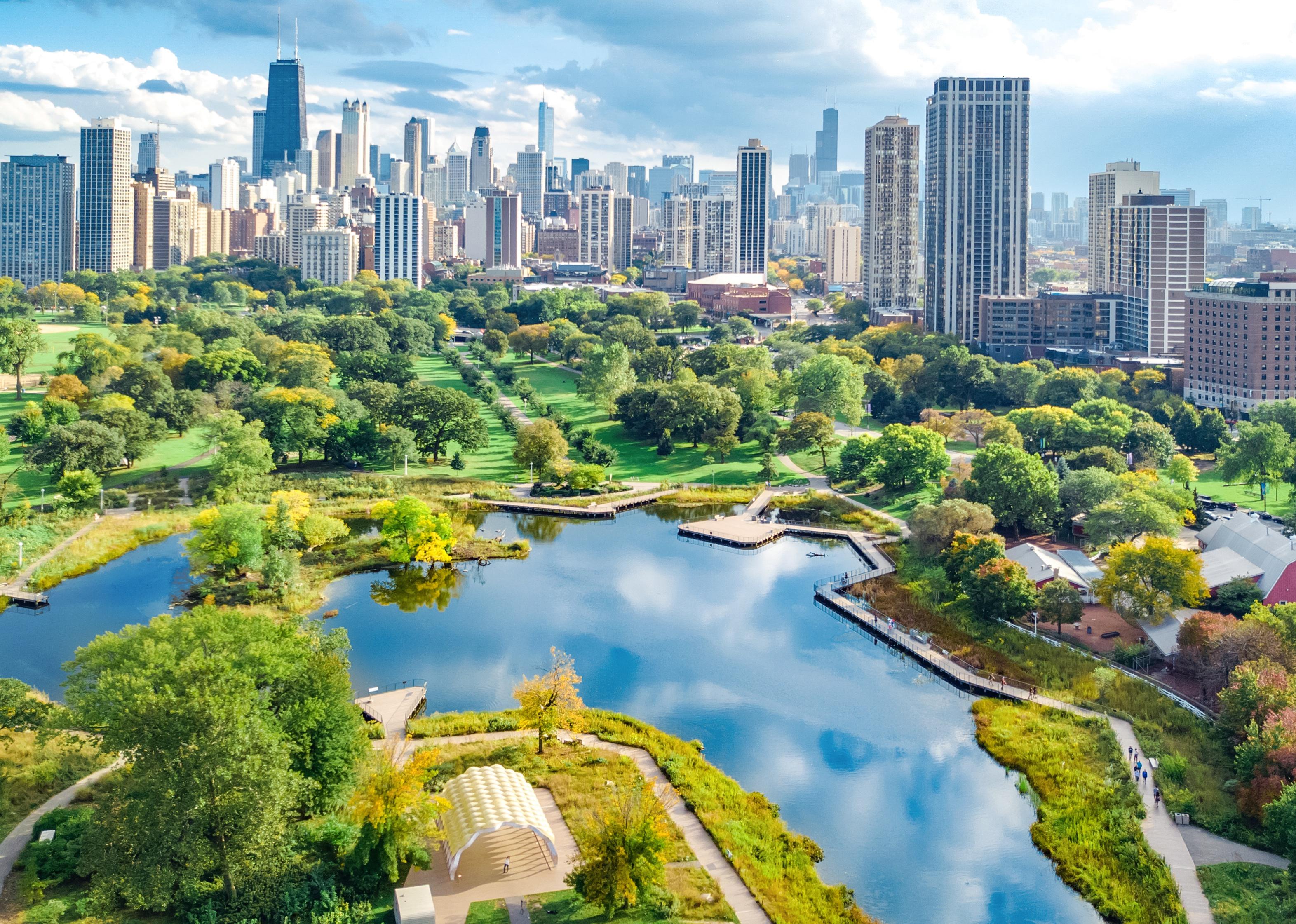
#6. Chicago, Illinois
- Total score (out of 100): 76.8
- Median park size: 2.2 acres
- Percent of city that is parkland: 10.1%
- Percent of residents within a 10-minute walk to a park: 98%
Chicago joins New York in the four-digit park count, with 1,241 parks. The city has parks honoring community history, mixing outdoor recreation with culture and history, including the Pullman National Monument, an open space memorializing labor reformers who pushed for workplace equity for Black factory employees.
Chicago also plays a role in the growing urban trail projects, with a 2.7-mile-long path along Highway 606. The area has given Windy City residents a space to run, walk, and bike, surrounded by rows of trees.
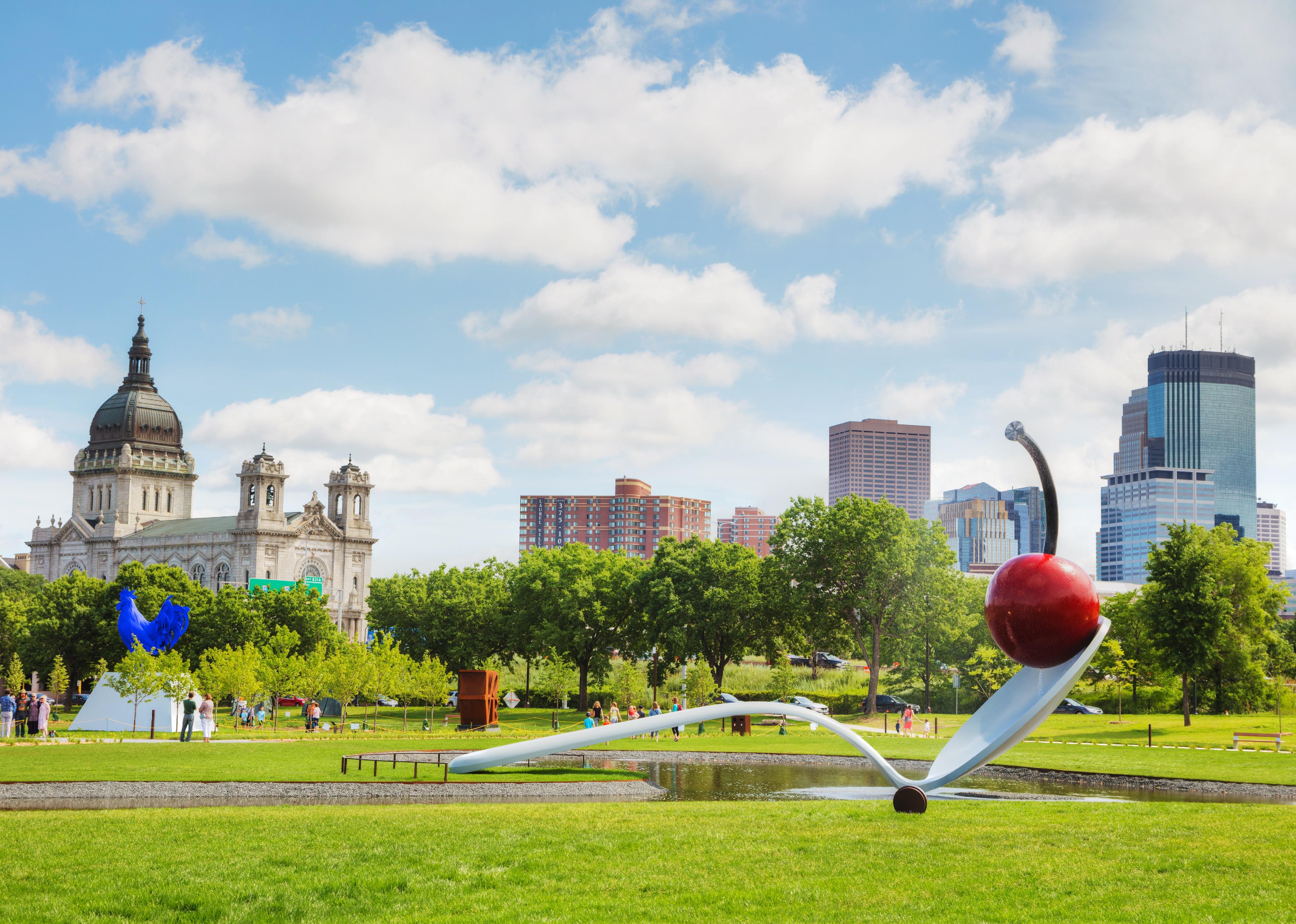
#5. Minneapolis, Minnesota
- Total score (out of 100): 78.6
- Median park size: 5.6 acres
- Percent of city that is parkland: 15.0%
- Percent of residents within a 10-minute walk to a park: 98%
Minneapolis is home to 22 of Minnesota's 10,000 lakes. The Chain of Five Lakes provides opportunities for fishing and kayaking on the water and running and biking along its border path. Minneapolis residents are never more than six blocks from a park, of which there are 274 in the city.
The Mississippi River cuts through the city, making it ideal for kayaking and other watersports. In the winter, the same waterways allow for icy Midwestern activities—including ice skating, hockey, and skiing.
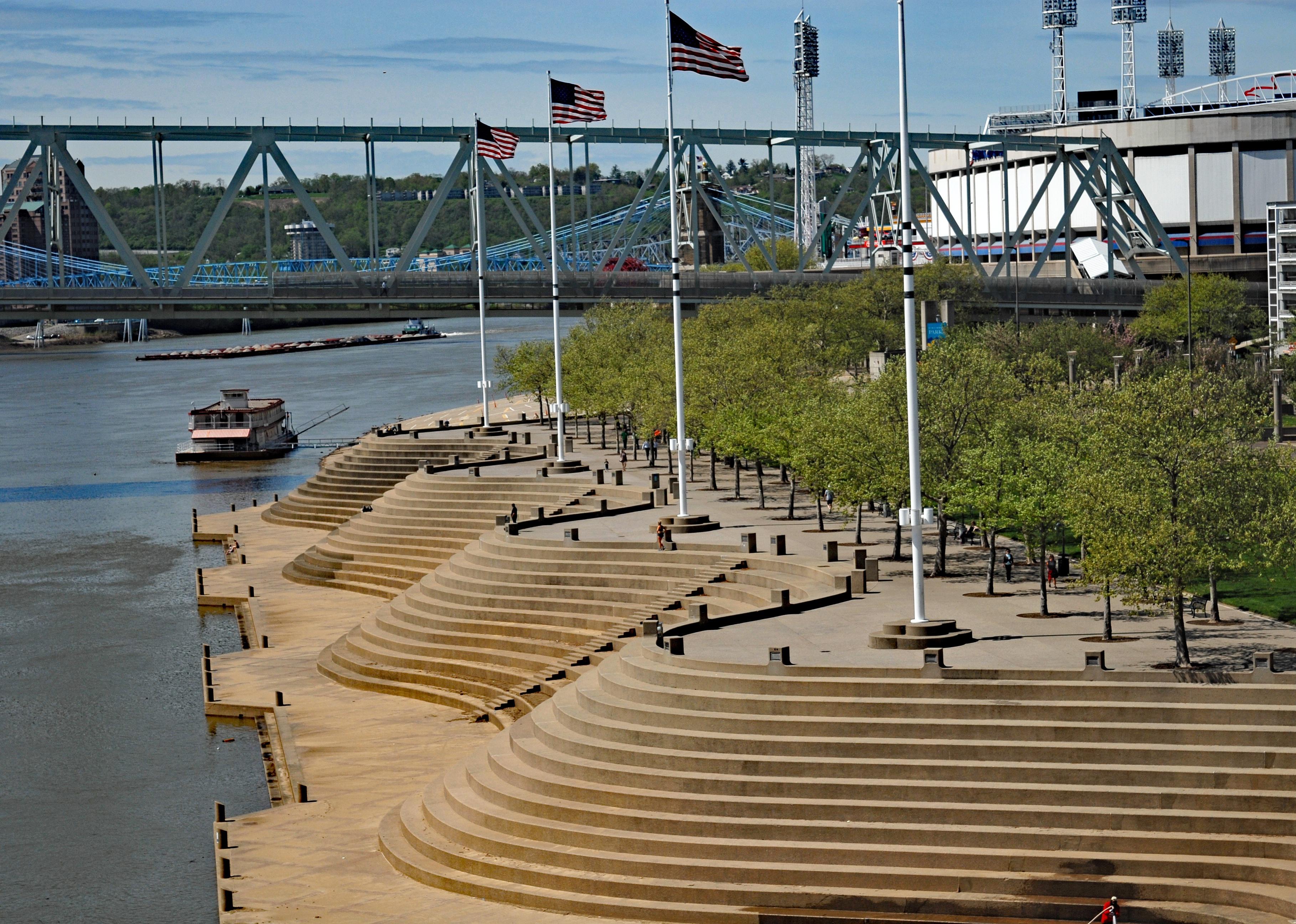
#4. Cincinnati, Ohio
- Total score (out of 100): 78.9
- Median park size: 4.2 acres
- Percent of city that is parkland: 16.5%
- Percent of residents within a 10-minute walk to a park: 88%
Biking is steadily rising in popularity in Cincinnati, thanks mainly to the 2017 completion of the Ohio-to-Erie trail. This trail spans 326 miles from the Ohio River in Cincinnati to Lake Erie in Cleveland. Hiking and running are also popular activities in Cincinnati's outdoor scene.
Mount Airy Forest is a hot spot for both, encompassing nearly 1,500 acres of available space. Cincinnati is one of a few U.S. cities working to improve equity in access to outdoor spaces through developing shared-use agreements.
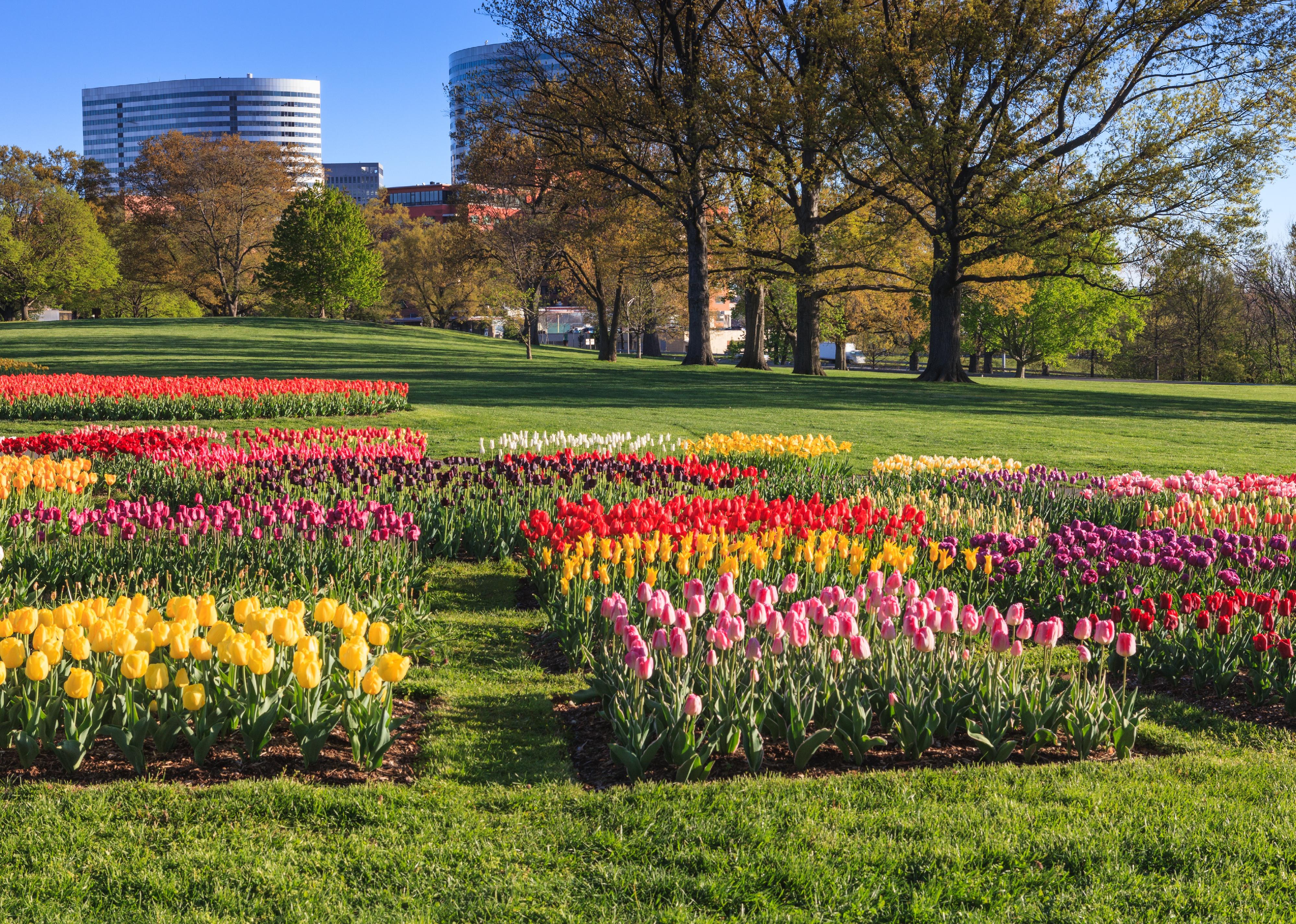
#3. Arlington, Virginia
- Total score (out of 100): 79.1
- Median park size: 2.5 acres
- Percent of city that is parkland: 11.1%
- Percent of residents within a 10-minute walk to a park: 99%
Arlington lies across the Potomac River west of Washington D.C., offering opportunities for residents to kayak and take boat rides in direct view of the Washington Monument and Lincoln Memorial. On shore, the city boasts 1,100 acres of parks, with running and hiking trails totaling 75 miles. The Arlington National Cemetery comprises more than half of this.
Although it is unique for a city to have a large, historical graveyard to centralize outdoor recreation, the vast hills and quiet atmosphere make it ideal for a walk or run away from the hustle and bustle of the city.
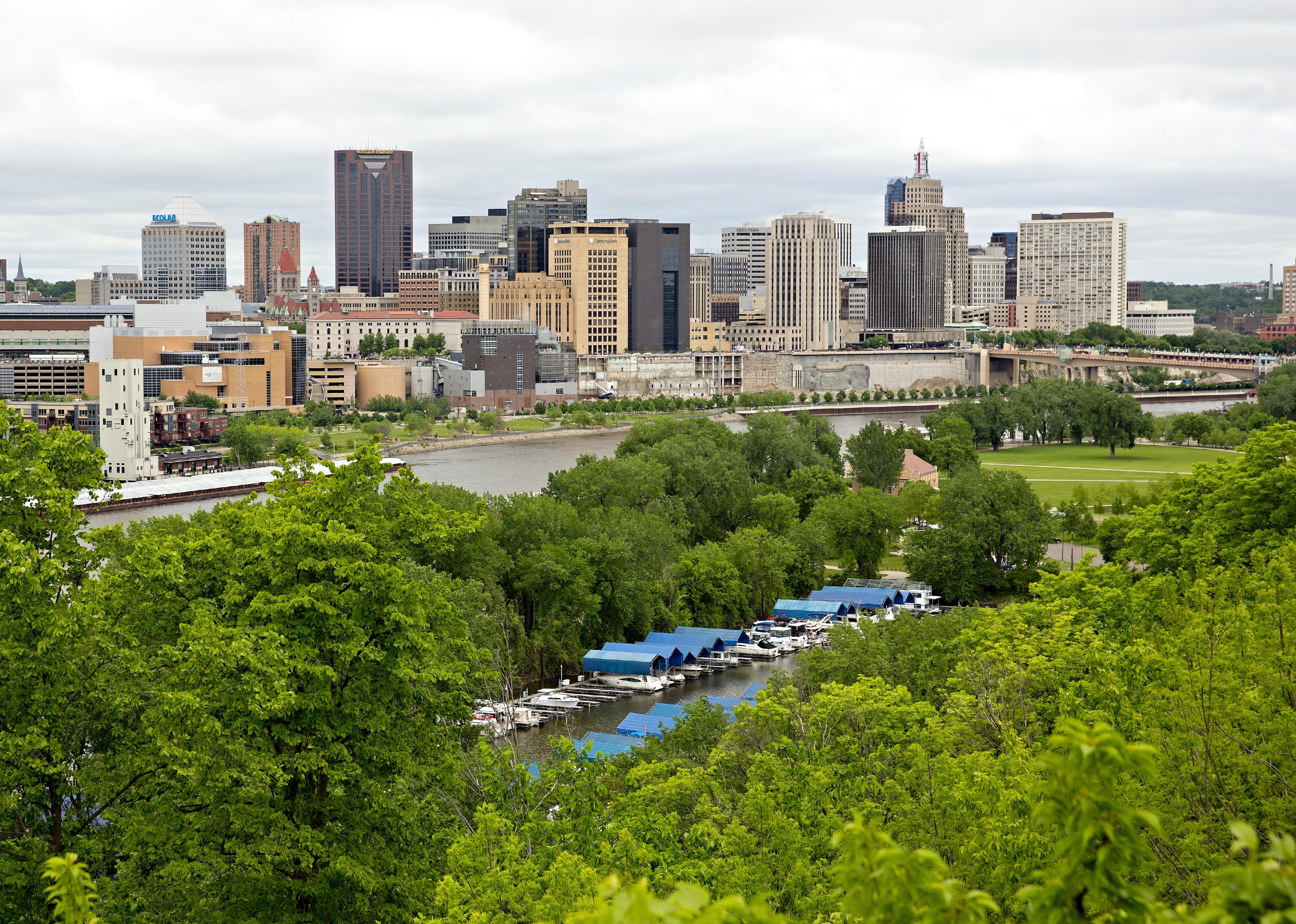
#2. St. Paul, Minnesota
- Total score (out of 100): 79.7
- Median park size: 3.2 acres
- Percent of city that is parkland: 15.4%
- Percent of residents within a 10-minute walk to a park: 99%
St. Paul includes 188.8 miles of bike paths. Additionally, residents use its plethora of outdoor spaces to fish and kayak during the warm months and ice fish, sled, and ski in the winter.
The city uses its exceptional green spaces to offer local children environmental, outdoor, and natural resource education programs. The Explore Outdoors St. Paul Initiative aims to ensure equity in access to the outdoors for local youth. It has been supported by the St. Paul 2040 Comprehensive Plan, of which "Celebrating Parks" is one of four key goals.
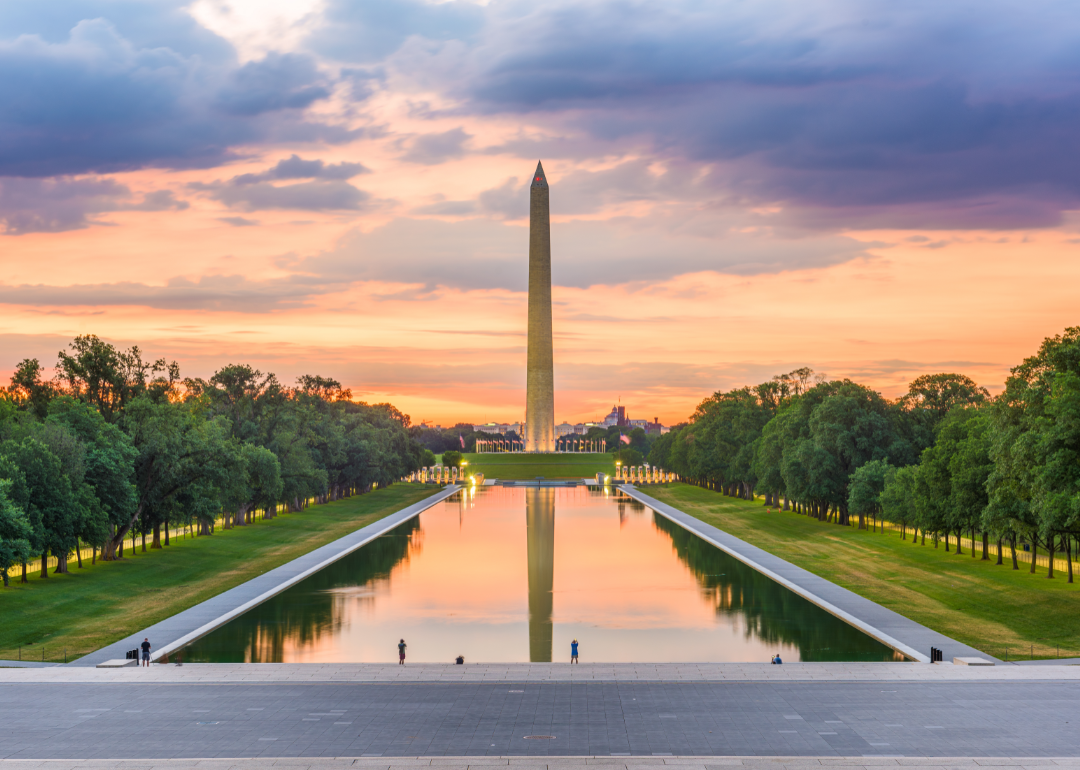
#1. Washington D.C.
- Total score (out of 100): 84.9
- Median park size: 1.4 acres
- Percent of city that is parkland: 23.9%
- Percent of residents within a 10-minute walk to a park: 98%
America's capital city is also the highest-ranked outdoor space city in the country. It contains 634 parks and green spaces and dedicates $284 per capita spending on parks. Perhaps the best-known spot is Rock Creek Park, which offers 1,754 acres for running and biking. City residents frequent the 32 miles of hiking trails only three miles from the White House.
An active local volunteer base helps preserve the inner-city oasis. The National Mall, famous for connecting the Capitol Building to the Washington Monument, is also a popular destination for strolling, biking, and picnicking.



